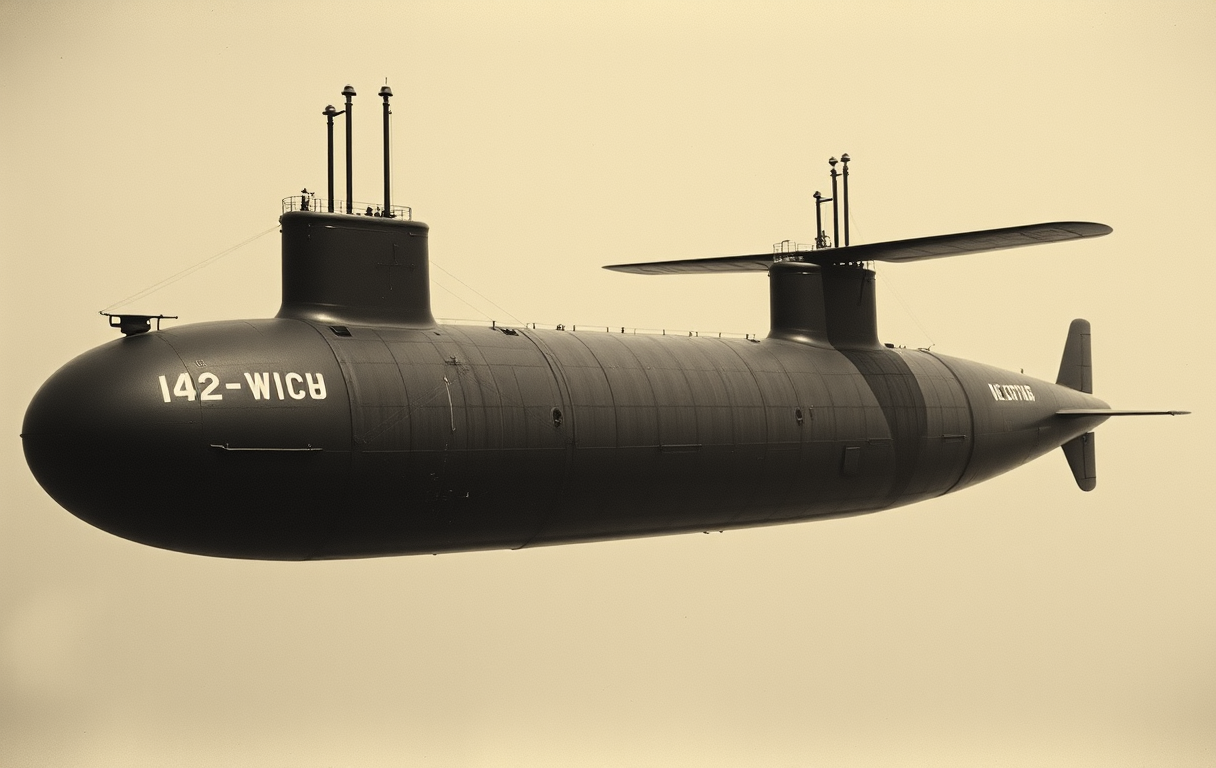The Wright brothers, Orville and Wilbur, are celebrated as pioneers of aviation, having launched the first successful airplane in 1903. But what if these mechanical masterminds, inspired by their interest in the mechanics of motion, had set their sights below the waves instead of above the clouds? This article explores the hypothetical engineering challenges, societal impacts, and historical ripple effects of a world where the Wright brothers became the forefathers of modern submarine technology.
Engineering Challenges: Submarines in the Early 20th Century
At the dawn of the 20th century, submarine technology was still in its infancy. The Wright brothers’ theoretical pivot to underwater exploration would have required solving numerous technical problems:
- Propulsion Systems:
- Unlike their lightweight airplane engines, submarines demanded heavier and more powerful propulsion. The brothers might have adapted steam engines, like early naval submarines, or experimented with compact internal combustion engines.
- Hull Design:
- Designing a craft capable of withstanding underwater pressure was a significant hurdle. The Wright brothers’ expertise in aerodynamics could have translated into streamlined, pressure-resistant designs, potentially advancing submarine shapes far ahead of their time.
- Buoyancy Control:
- Mastering ballast systems would have been critical. Their understanding of lift and drag might have informed innovative solutions for maintaining depth stability and maneuverability.
- Underwater Navigation:
- Without GPS or sonar, submarines relied on rudimentary navigation methods. The Wright brothers’ inventive spirits could have led to early innovations in underwater compasses or periscope technology.
How Would History Have Changed?
- Aviation Delayed:
- If the Wright brothers had pursued submarines, it’s likely that aviation breakthroughs would have been delayed, potentially postponing key developments like commercial air travel, airmail, and aerial warfare.
- Naval Superiority Shift:
- The brothers’ technological contributions to submarines could have given the United States a decisive edge in naval warfare, particularly during World War I. Submarines might have become the dominant naval force earlier than they did.
- Commercial Applications:
- Civilian submarines for underwater tourism or cargo transport could have emerged decades earlier. By the mid-20th century, underwater exploration might have been as common as air travel.
- Cultural Impact:
- A shift in focus from the skies to the seas might have inspired a global fascination with the ocean rather than space, potentially altering humanity’s exploration priorities.
Technical Feasibility: Could They Have Succeeded?
Given their ingenuity and resourcefulness, the Wright brothers likely would have made significant contributions to submarine technology. However, they would have faced distinct challenges compared to aviation:
- Material Limitations: The early 1900s lacked lightweight, durable materials like modern alloys, which would have limited their designs.
- Funding and Support: The Wright brothers relied heavily on self-funding and partnerships for their aviation projects. Convincing investors to back submarine technology might have been a harder sell.
Despite these hurdles, their innovative approach to problem-solving suggests they could have been early pioneers of functional, small-scale submarines.
Speculating on the Present
In this alternate timeline, we might find ourselves marveling at submarine races rather than air shows, and underwater transport networks could rival highways and flight paths. Names like “Wright’s Wavecraft” might have adorned textbooks, with the brothers celebrated as undersea innovators instead of airborne ones.
